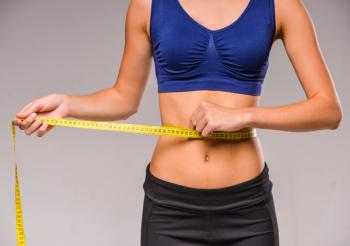
Treating Eating Disorders and PTSD Concurrently Leads to Long-Term Recovery
Research shows an undeniable connection between PTSD and eating disorders.
Eating disorders (EDs), including
In fact, research shows an undeniable connection between PTSD and EDs. Individuals with significant traumatic histories and/or PTSD have more severe ED symptoms, more suicidality, and more anxiety and depressive symptoms.1 Studying the intersection between these 2 mental health illnesses helps us understand how to treat them together moving forward, specifically in higher levels of care, including residential ED treatment programs.
Groundbreaking research recently published in the Journal of Eating Disorders shows the effectiveness of integrating trauma treatment with evidenced-based ED treatments in residential programs. The conventional thinking in psychiatry had been that it was best to refrain from trauma work while in intensive treatment settings, instead deferring this to later outpatient treatment. These research results demonstrate that multimodal, integrated treatment approaches based on principles of cognitive processing therapy (CPT) that address trauma and PTSD can be successfully delivered in residential treatment to patients with PTSD and associated comorbidity.1
Prevalence of PTSD in Higher Levels of Eating Disorder Treatment
Research from the past few years indicates that PTSD is common in patients receiving higher levels of care. In 2020, we reported that up to half (49%) of adults admitted to residential ED treatment met the criteria for PTSD,2 while an additional study from 2021 found that of 613 adults in residential treatment, 53% were reported to likely have PTSD based on PCL-5 >33.3 Furthermore, 35% of adult females in ED residential treatment also had PTSD, according to a 2021 study.4
Individuals with EDs and comorbid PTSD experience more severe anxiety, depression, ED symptoms, and worse quality of life compared to those without PTSD. Adults with EDs and PTSD had significantly higher scores than clients without PTSD on all measures, including total number of traumas on the Life Events Checklist (p<.001), Eating Disorder Examination Questionnaire global and all subscale scores (p<.001), Patient Health Questionnaire-9 depression scores (p<.001), and Spielberg’s State-Trait Anxiety Inventory scores (State (p<.001), Trait (p<.001)).2
Additionally, research shows that PTSD is common among adolescents who are admitted to ED residential programs. These
Sexual and gender minorities in ED treatment have significantly higher rates of PTSD compared with those who do not identify as
Outcomes With Concurrent Treatment
Using an integrated clinical approach based upon principles of CPT and other evidence-based treatments, we studied outcomes at discharge and 6 months following discharge in 609 patients [96% female; mean age (+/- SD) = 26.0 (+/- 8.8 years); 22% LGBTQ+] with and without PTSD. All patients improved significantly and remained improved at follow-up compared to admission. However, all measured symptoms, including those of ED, major depression, and state and trait anxiety, and a measure of quality of life, were worse in patients with PTSD at every time point (admission, discharge and follow-up).1
Going beyond trauma-informed care by providing evidence-based trauma treatment results in better outcomes. We integrated CPT, 1 of the 3 gold standard PTSD treatments, into comprehensive ED treatment based on
The study showed that 81% of patients with PTSD at admission had significant reductions in trauma symptom scores from admission to discharge and 73% from admission to follow-up 6 months later. Not only did patients achieve sustained improvements in ED symptoms, but they also gained significant, long-term relief from trauma symptoms after completing programming using an integrated, multimodal clinical approach.
Post-discharge outcomes data shows that not only treating clients’ mental health illnesses, but also providing them with the tools and coping skills to self-manage symptoms and maintain recovery, helps patients get well and stay well longer.
Concluding Thoughts
There is growing consensus in the ED field that integrated, concurrent treatments targeting EDs and PTSD are needed to help these complex clients.2,4,7,8,9,10
Monte Nido & Affiliates is the first ED program to provide evidence-based PTSD treatments and groundbreaking research showing that clients’ improvements last.
The findings of this study conclude that concurrent, parallel, but interwoven, approaches to treatment, one for the ED and one for PTSD, can be delivered during the same treatment course by the same providers and therapists. Integrated therapy techniques for PTSD and related disorders can be delivered successfully in residential treatment and are associated with lasting improvements 6 months after discharge (
The hope for this research and these findings is that it may help others in the ED field develop more effective and integrated treatment approaches for patients with PTSD admitted to higher levels of care for ED treatment.
Dr Perlman is Chief Medical Officer at Monte Nido & Affiliates, overseeing psychiatric and medical care at over 50 facilities across the nation. She is double board certified in psychiatry and addiction medicine and has trained in psychoanalytic psychotherapy. She is on the Board of Directors of the Eating Disorders Coalition, served as Vice President of the Board from 2018 through 2022, and advocates on Capitol Hill regularly for increasing eating disorder education and access to treatment. Additionally, she oversees Monte Nido & Affiliates IRB-approved research study on clinical outcomes as co-principal investigator and has coauthored several papers in peer-reviewed research journals on PTSD and eating disorders.
References
1. Brewerton TD, Gavidia I, Suro G, Perlman MM.
2. Brewerton TD, Perlman MM, Gavidia I, et al.
3. Scharff A, Ortiz SN, Forrest LN, Smith AR.
4. Rienecke RD, Blalock DV, Duffy A, et al.
5. Brewerton TD, Gavidia I, Suro G, Perlman MM.
6. Brewerton TD, Suro G, Gavidia I, Perlman MM.
7. Claudat K, Reilly EE, Convertino AD, et al.
8. Mitchell KS, Singh S, Hardin S, Thompson-Brenner H.
9. Trottier K, Monson CM.
10. Scharff A, Ortiz SN, Forrest LN, et al.
Newsletter
Receive trusted psychiatric news, expert analysis, and clinical insights — subscribe today to support your practice and your patients.

















